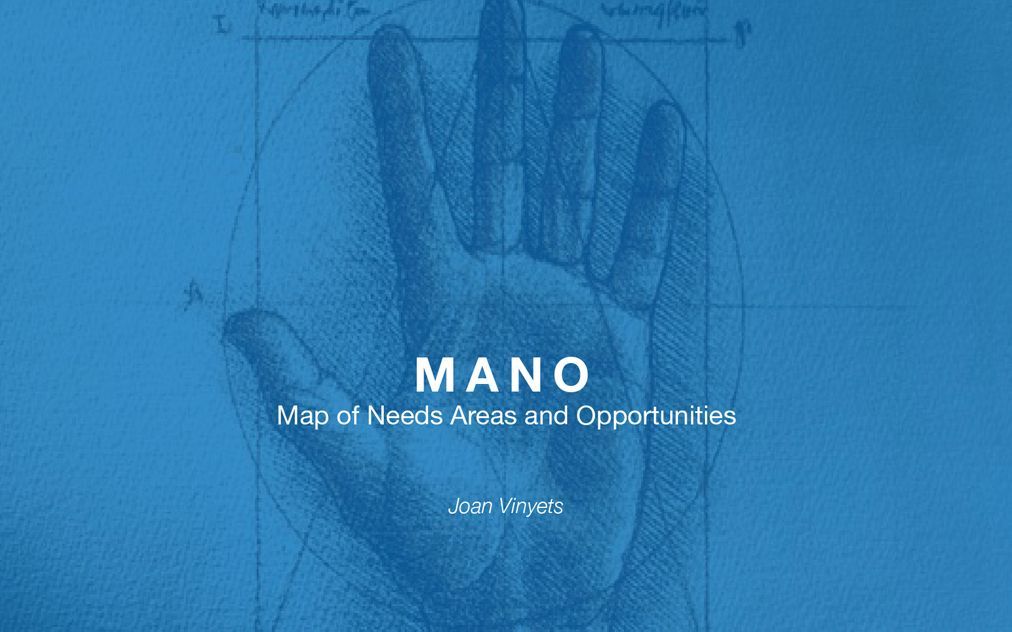A key aspect for Connociam when it comes to implementing customer-centred strategies is acquiring a precise understanding of users, which can, later on, be transformed into opportunities. It is a matter of identifying what are the needs, problems, frustrations or pain points of customers’ (or ecosystem’s), and later on of turning them into opportunities for creating added value in solving a business or innovation challenge.
MANO was born from the expertise of Connociam’s partners, and it is the first of a series of toolkits, which Connociam wishes to share with professionals dedicated to designing, innovating and generating value propositions.
MANO is a toolkit that guides the innovation and ideas generation process based on insights gathered during prior research. Hence, it presupposes that research has already been undertaken concerning the body of users of a specific segment during a previous fieldwork stage in order to explore their experiences around the use of a specific product, service, experience, etc. Secondly, once the fieldwork has been completed, it is also fundamental to have carried out various review and analysis sessions of the data and information gathered and compiled during the fieldwork. During the insights analysis sessions, it is absolutely essential to have identified the users’ main needs (problems, frustrations, aspirations, desires, gaps).
The MANO application enables you to understand and categorize in a structured way the main “needs” of users, to visualize and focus on possible routes for value creation, as well as to facilitate a shared understanding among all the people in the team of possible innovation opportunities.
Using MANO you will be able to explore users’ most relevant needs and their use experiences of products & services. In addition, you will be able to identify and define value creation opportunities so as to come up with solutions that will address their problems.
Inside this toolkit you will find a process outlined for you step by step as well as some useful and practical materials for mapping out users’ needs areas, as well as the way to turn this map into an opportunities map, and based on the latter, to construct possible innovation and value proposition routes.
We hope you will find it useful!
